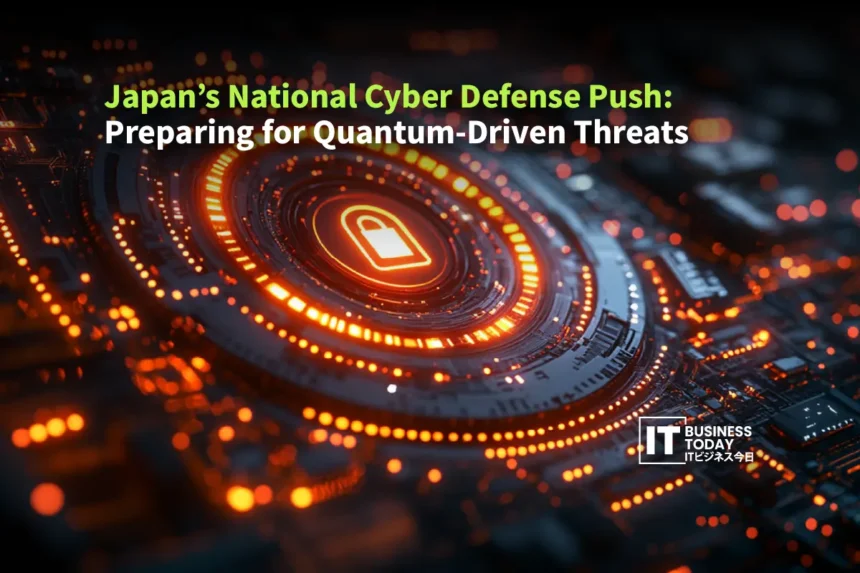Imagine a world where today’s encryption can be cracked in minutes. That world is coming, and Japan is on the front lines. Every government system, bank, and industrial network could be exposed if attackers harness quantum computers first. The stakes are enormous, and the clock is ticking.
Quantum-driven threats are no longer theoretical. Methods like Shor’s algorithm could soon render current encryption useless, putting classified data, financial systems, and critical infrastructure at risk. Japan cannot wait for disaster to strike.
The country has launched a coordinated effort to achieve crypto-agility, preparing systems, policies, and talent to face this emerging challenge.
Also Read: From Data Lakes to AI Hubs: Architecting the Intelligence Layer of the Enterprise
This article examines the looming quantum-driven threats, Japan’s government-led strategy, the technologies being tested, and the operational challenges of making theory work in practice. The question is clear: can Japan secure its digital future before attackers do?
The Urgent Threat Facing Japan’s Critical Data
Japan’s sensitive data is sitting on a ticking clock. The encryption that keeps it safe today, like RSA and ECC, will not survive once quantum-driven threats arrive. This is not theory. Classified government documents, corporate secrets, and financial records are all sitting targets for attacks that could be harvested now and decrypted later. Energy grids, banking systems, and government communications face serious exposure. If attackers succeed, the consequences will not be just technical. They could also erode public trust and weaken national stability.
Japan is acting quickly. On March 18, 2025, NISC ran the International Cybersecurity Challenge in Tokyo. Young cyber professionals came together to test their skills and learn why hands-on experience matters. This was more than a competition. It showed that having trained people on the front lines is just as important as technology. At the same time, NISC is updating protections across government systems, teaming up with partners abroad, and putting in place tools that can handle the next wave of cyber threats. The focus is simple: prepare now, keep data safe, and make sure Japan stays ahead of anyone trying to exploit new vulnerabilities.
The aim is simple but urgent. Japan wants to secure its most sensitive data today, deploy quantum-ready protections, and make sure that when quantum computing changes the game, the country is ready. Waiting is not an option.
Pillar 1. Government Mandate and Strategic Investment
Japan is not waiting for quantum-driven threats to arrive. The government is moving deliberately, but also with urgency. At the center of this push is NISC. They set security standards, check that agencies actually follow them, and make sure rules don’t stay on paper. NISC is coordinating the entire effort, which means tracking progress, spotting gaps, and pushing government systems toward real protection rather than empty promises.
METI sits alongside NISC but has a different focus. They are the ones driving industry involvement, making sure private companies, startups, and research labs are all part of the equation. Back in March 2025, METI released a policy package aimed squarely at strengthening Japan’s cybersecurity industry. It’s about funding, partnerships, and creating practical solutions that can actually defend against emerging quantum-driven threats. In September 2025, METI and NISC joined forces to establish a shared vision for the Software Bill of Materials. The goal is clear: understand every piece of software running in critical systems and make sure potential vulnerabilities are handled before they become serious problems.
NICT handles the technical side of the game. They are the lab, the testbed, and the innovation engine. Quantum key distribution, post-quantum cryptography; these are not just buzzwords for them. NICT is experimenting, testing, and building systems designed to withstand quantum-driven threats.
All of this is guided by the Quantum Technology Innovation Strategy Roadmap. Think of it as a GPS for Japan’s national cybersecurity effort. It tells agencies and companies where to focus, what to prioritize, and how to coordinate.
Put it together, and you have a government that isn’t just talking about defending itself. They are investing, coordinating, testing, and making sure industry and academia are all locked in. The playbook is set, the money is moving, and the work has started. Waiting is not an option.
Pillar 2. Dual-Track Technological Leadership (PQC & QKD)
Japan is taking a two-pronged approach to prepare for quantum-driven threats. On one hand, there is Post-Quantum Cryptography. This is about software-based algorithms that can resist attacks from quantum computers. Japan is following the U.S. NIST standardization process, focusing on lattice-based and hash-based algorithms like CRYSTALS-Kyber and Dilithium. The challenge is not just developing these algorithms but making sure they are standardized across all government systems. Without consistent implementation, a single weak link could put the entire network at risk.
On the other hand, Japan is heavily investing in Quantum Key Distribution, or QKD. This uses photons to create ultra-secure keys for short-distance communication. It is particularly useful in financial districts or between secure government buildings, where even small breaches could be catastrophic.
NEC, in partnership with NICT and Toshiba, has been leading real-world demonstrations. On September 16, 2025, they unveiled the world’s first integrated system for QKD and high-speed data transmission in a large-capacity optical network. Earlier, in April 2025, NEC achieved Japan’s longest terrestrial wireless optical communication using quantum cryptography, showing that secure transmission for critical infrastructure is possible at scale.
Together, PQC and QKD form a dual-track strategy. One track safeguards software, while the other keeps hardware communications secure. Japan is not only preparing in theory. Japan is actively testing and deploying these technologies to show they can withstand quantum-driven threats in real-world conditions. The goal is clear: no matter how sophisticated the attackers, critical data and communications stay safe.
The Challenge of Transition in Achieving Cryptographic Agility
Planning and policy are one thing. Making the switch in real systems is another. Japan now faces the messy reality of moving from classical encryption to quantum-ready solutions. The first step is understanding the attack surface. Every government agency, every critical infrastructure system, needs a full cryptographic inventory. It is painstaking work. Miss a single system or outdated protocol, and vulnerabilities remain, giving attackers a foothold to exploit.
The next step is hybrid migration. Japan cannot flip a switch and drop RSA overnight. Instead, hybrid certificates and protocols run both classical algorithms and post-quantum cryptography side by side. This approach keeps systems compatible while they slowly transition, reducing risk while building resilience.
Real-world examples are already emerging. In January 2025, NTT Communications rolled out a system using multiple PQC algorithms for secure key exchange. The company plans to add Quantum Key Distribution in the future, which will strengthen defenses against quantum-driven threats. At the same time, NTT is bringing these technologies into its Innovative Optical and Wireless Network (IOWN) to ensure secure data transmission across Japan’s high-capacity networks.
Transitioning is not just a technical challenge. It is also operational, logistical, and strategic. Japan is learning on the move, testing hybrid solutions and putting the frameworks in place needed to stay cryptographically agile. The goal is simple: protect critical systems today while preparing for a future where quantum-driven threats are real and unavoidable.
The Human and Global Dimensions

Technology cannot do the job alone. Japan needs people who actually understand quantum science and can put post-quantum cryptography into practice.
Even the strongest systems can fail if the right people aren’t there. Japan is working with allies through the Quad, the G7, and U.S. cybersecurity talks.
The idea is simple. Post-quantum encryption has to work everywhere, and data must stay safe no matter what. Data has to stay safe no matter the border. Talent and international cooperation matter just as much as the technology itself.
Groups like the ITU help guide these efforts, making sure Japan is aligned with global cybersecurity frameworks. Success depends on both talent and collaboration.
A Forward-Looking Quantum-Safe Future

Japan is getting ready for threats that are just over the horizon. Government, industry, and universities are all working together, testing technologies, training people, and building systems that actually work. This kind of teamwork puts Japan ahead when it comes to quantum readiness.
Cybersecurity is not separate from industrial strength. Protecting data and networks is part of being a technology leader. The work is still ongoing, the goals are big, but one thing is clear: Japan is taking action now to make sure its digital future is safe.







